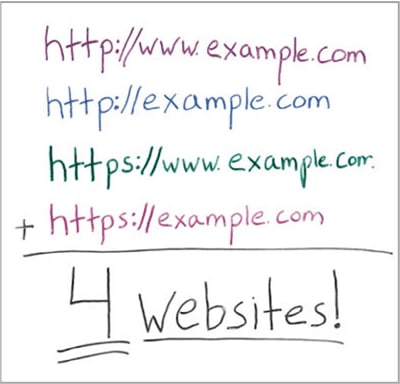
Sign Up Form
Join over 2,500 top life science marketing directors who receive weekly digital marketing tips.
SEO Sign Up Form Mobile
Join over 2,500 top life science marketing directors who receive weekly digital marketing tips.
TECHNICAL ISSUES
56. Crawl your entire website for site errors using Moz to identify technical issues.
Membership to the best SEO crawl software, Moz, is $99/mo, however you can reach out to us at [email protected] to get access to a site crawl for free. Alternatively, ScreamingFrog SEO Tool provides a semi-free option for the first 500 pages. These tools will help you check your site for technical issues that may result in penalties by search engines.
57. 301 redirections should be used for all permanent redirections.
58. If the root is being directed to a landing page, are they using a 301 instead of a 302?
You can use ‘Live HTTP Headers’ Firefox plugin to check 301s.
59. Avoid “Bad” redirects.
These include 302s, 307s, meta refresh, and JavaScript redirects as they pass little to no link equity.
60. Redirects point directly to the final URL and do not route through redirect chains.
The reason for this is that redirect chains slow down the load time and diminish the amount of link equity associated with the final URL. Additionally, Google has said that they will stop following a redirect chain after several redirects.
61. Check Google Search Console for 404 / 500 errors, manual actions, duplicate content, missing titles and other technical errors.
Make sure to stay up to date to the notices that Google sends to the linked account email.
62. Use of iFrames.
Is content being pulled in via iFrames? Don’t use iFrames for pages that you really want to rank well for such as your main pages. Content embedded through iFrames won’t count which makes it difficult for you to rank. Sometimes life science companies put technical details, specifications and other product information in iFrames which makes it very difficult to index.
63. Avoid any use of Flash?
Bottom line is that modern websites should not utilize Flash because it is very difficult for search engines to index.
64. Canonical version of the site established through 301s and is specified in Google Webmaster Tools.
65. Rel canonical link tag is properly implemented across the site.
Make sure your rel canonical link tag points to the correct page, and every page doesn’t point to the homepage.
66. Uses absolute URLs instead of relative URLs
At any given time, your website can have several different configurations that might be causing duplicate content issues. You could have just a standard https://www. example.com.
However, the main sources that we see of domain level duplicate content are when the non-www.example.com does not redirect to the www or vice-versa, and when the HTTPS versions of your URLs are not forced to resolve to HTTP versions or, again, vice-versa. What this can mean is if all of these scenarios are true, if all four of these URLs resolve without being forced to resolve to a canonical version, you can, in essence, have four versions of your website out on the Internet. This obviously presents duplicate website issues. Read this fantastic Moz article for more in depth resolutions.

Fig 23. Four unique links seen by Google as four unique websites – courtesy of Moz.com

